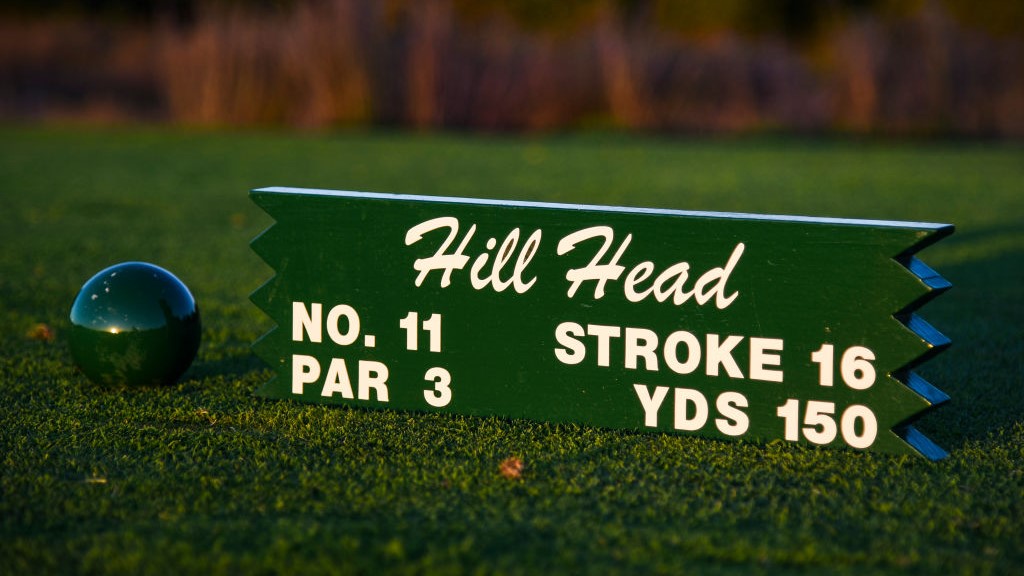How Are The Yardages Of Golf Holes Actually Measured?
What's the system used for measuring golf holes and what exactly do the distances listed on a scorecard refer to?


How are golf hole yardages measured? All golf scorecards have distances listed on them for each hole, normally given from each tee on each hole, so how exactly are these determined?
The yardages from each tee are calculated to the centre of the green. The starting point is the base plate of each tee. Sometimes these will be flat plates embedded in the ground, other times posts sticking up from the ground, normally with other details such as stroke index and par on them. When there are more tees than just one on each hole – for instance a white tee, yellow tee and red tee – each of these will have their own plate even if they share the same tee box.
These plates are normally put at the maximum distance a hole can play from that particular tee. So the tee of the day, where the tee markers are placed, may play shorter than this.
On the long holes, this hardly matters, but a short par-3 hole could be, say, 10 to 20% less than the scorecard yardage when the tee markers are forward of the plate and the flag is on the front portion of the green.
Measuring yardages could historically vary as to whether the measurement followed the contour of the ground or ‘line of sight’. Golf used to be played on the ground more than it is now, due to the evolution of equipment, and so hole measurements often followed the land’s contours.
On most holes the difference between these measuring methods makes little difference. But on some, such as the excellent par-3 3rd at Trevose Golf & Country Club in Cornwall, which is played over a deep valley, it does. From the whites tees on this hole, it is listed as 156 yards. But stand on the white tee and walk 156 yards forward you will still be a long way short of the centre of the green. But hit a ball 156 yards from the white tee plate and your ball will be in the centre of the green.
In 1967 the United States Golf Association decreed that, at courses in their jurisdiction, hole yardages were to be ‘line of sight’ ones.
Get the Golf Monthly Newsletter
Subscribe to the Golf Monthly newsletter to stay up to date with all the latest tour news, equipment news, reviews, head-to-heads and buyer’s guides from our team of experienced experts.
Doglegs are measured as along the fairway, not in a direct line between tee and green. Players can thus often play the hole at a shorter length than that listed on the scorecard by cutting off the corner of the dogleg. Measurement are made to and from the pivot point of the dogleg. The USGA handicap manual advises that course officials should select a spot approximately 250 yards from the tee for men and 210 for women “if a typical pivot point cannot be determined”.
Courses often have marker posts at certain distances from the green – 150 yards is typical, but some have 100- and 200-yard markers as well. Often the course measures these to the front of the green, but sometimes it is to the centre of the green. The scorecard normally explains what method is used; if not, the starter on those in the pro shop can tell you.
Contributing Writer Roderick is the author of the critically acclaimed comic golf novel, Summer At Tangents. Golf courses and travel are Roderick’s particular interests. He writes travel articles and general features for the magazine, travel supplement and website. He also compiles the magazine's crossword. He is a member of Trevose Golf & Country Club and has played golf in around two dozen countries. Cricket is his other main sporting love. He is also the author of five non-fiction books, four of which are still in print: The Novel Life of PG Wodehouse; The Don: Beyond Boundaries; Wally Hammond: Gentleman & Player and England’s Greatest Post-War All Rounder.
-
 Reports: Wesley Bryan Suspended By PGA Tour After Playing In LIV Golf Duels
Reports: Wesley Bryan Suspended By PGA Tour After Playing In LIV Golf DuelsThe 2017 RBC Heritage winner is said to have been suspended by the PGA Tour after teeing it up in the recent LIV Golf creator event in Miami
By Elliott Heath
-
 LIV Golf Mexico City: Book Your Tickets To See The Stars Of The Game
LIV Golf Mexico City: Book Your Tickets To See The Stars Of The GameMexico City welcomes LIV Golf's all-star roster later this month, where you can see the world's best players and enjoy the show and the family friendly atmosphere
By Golf Monthly